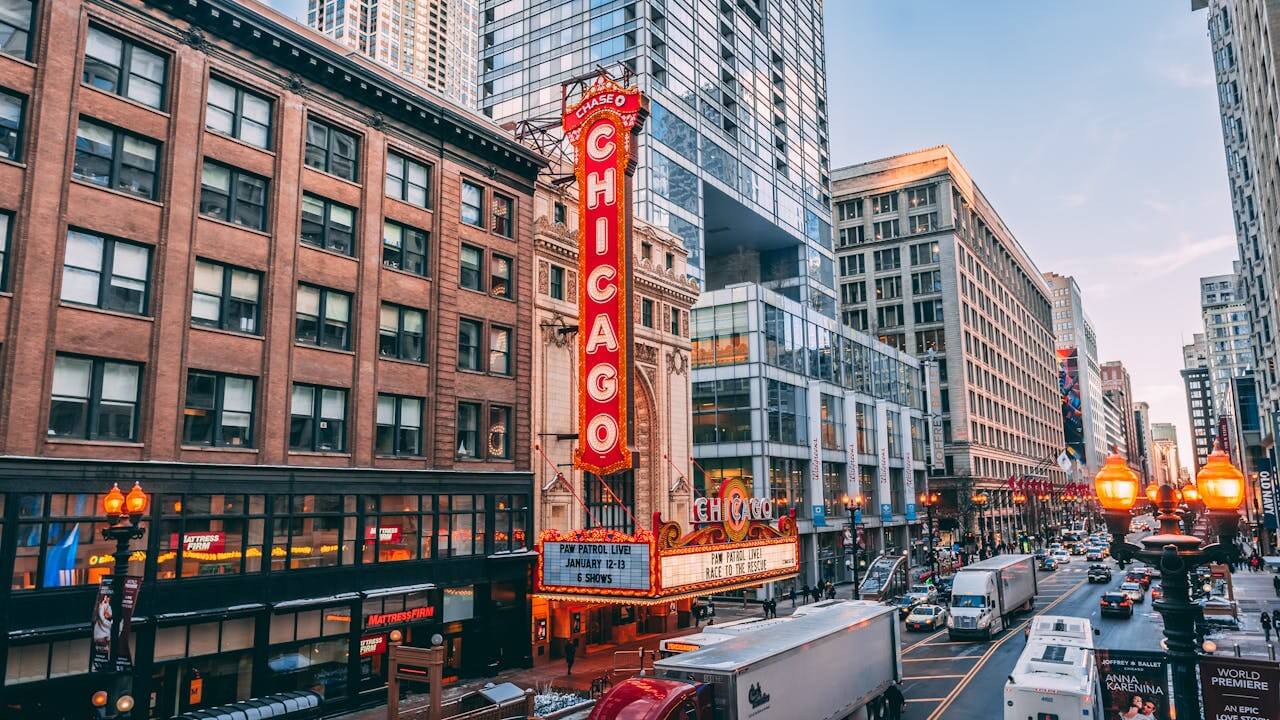
No one enjoys sitting in traffic, and, unfortunately, Chicago is among the worst cities in the nation when it comes to traffic congestion. But why is traffic in Chicago so bad? With a population of over 2.5 million people and at least one vehicle in most households, there are a lot of cars on Chicago roadways. Coupled with the fact that fewer people have been using public transportation since the pandemic, this has heavily contributed to the city’s traffic problems. Although city officials are continuously making efforts to curb traffic delays, avoiding them takes careful planning.
Key Statistics on Chicago Traffic Delays
Traffic congestion in Chicago results in an average commute time of 33.5 minutes, making it longer than the national average of 26.6 minutes. Plus, more than 3% of commuters experience a super commute time of 90 minutes or more. This time allotted to sitting in traffic can make for a much longer work day. Getting around Chicago can be a challenge for visitors and tourists, especially during higher traffic times. Reckless driving accounts for 84% of traffic fatalities in the city, while speeding causes 68% of traffic deaths.
Some areas of Chicago have more congestion than others, and knowing when and where traffic is heavy can help you avoid delays. For example, the intersection at North State Street and Lake Street can experience heavy traffic during peak times in the afternoon and into the evening. Wacker Drive often has heavy traffic, especially near the Michigan Avenue intersection. Friday is typically the worst day for traffic in the city, and early mornings and mid to late afternoons are the worst times.
Factors Contributing to Chicago’s Traffic Woes
Chicago’s traffic woes aren’t related to a single issue. Many factors contribute to the traffic problems that plague residents and visitors. The number of cars on the road is a major issue that’s challenging to tackle. Many people stopped using public transportation during the pandemic and are still driving their own vehicles, which causes higher congestion. Traffic patterns have also changed because many workers are now working from home at least part time. This makes traffic less predictable and harder to plan your day around.
Construction zones contribute to Chicago’s traffic problem because of delays and interruptions to the flow of traffic. Although road construction is beneficial and can improve traffic flow upon completion, it makes travel times longer during the improvement process. Accidents and careless drivers make roads more dangerous and create traffic jams in Chicago that delay you from getting to your destination. Even when you’re not directly involved in a collision, you’ll have to wait if vehicles are blocking the road or police stop traffic.
An increase in the number of delivery drivers is another factor that contributes to the worsening traffic problem. As more people have things delivered directly to their home or office, the number of delivery vehicles on the road makes it harder to get around the city. Delivery trucks may block roads while they unload packages or take up multiple parking spaces, causing people to circle around waiting for them to open up.
Impact of Weather and Seasonal Variations
The weather in Chicago has the potential to seriously exacerbate traffic problems. Winter storms make roads icy and slick, and safe driving means going slower than normal. Rain and fog can create challenges for traffic too during certain times of year. These conditions limit visibility and make traveling around Chicago in your car more dangerous.
Seasonal changes in the Great Lakes region contribute to poor road conditions, as the extreme fluctuations in temperature can cause asphalt to break down more rapidly. With Chicago’s cold winters and humid summers, you may notice roads in the city have cracks, uneven surfaces, and potholes that can make navigating difficult. The age of infrastructure is also a factor, as maintaining and updating older roads is expensive and time-consuming.
How Does Chicago Compare to Other Major Cities?
When comparing the traffic congestion in Chicago with other major cities in the United States, you’ll find that only New York City is worse, although Los Angeles comes close. Some sources indicate that Chicago drivers spend around 102 hours of their life each year sitting in traffic compared to 88 hours for Los Angeles residents and tourists. This loss of time also contributes to a loss of income because the time in traffic is time not spent at work.
Tips for Avoiding Traffic in Chicago
Here are a few tips to help you avoid traffic congestion when you’re making your way around Chicago:
- Stay parked during peak driving times between 7 a.m. and 9 a.m. and between 3 p.m. and 7 p.m.
- Plan trips for weekends in the earlier part of the day when traffic is lightest.
- Take public transportation to high traffic areas.
- Use the I-294 to avoid going directly through the city.
- Download an app or use a website with real-time traffic data to plan your route around high traffic areas.
Visit Pequod’s on Your Chicago Trip
If you’re planning a trip to Chicago, make sure to include a stop at Pequod’s Pizza on your itinerary. We guarantee our award-winning Chicago deep-dish pizza is well worth the trip. You can’t miss your chance to sink your teeth into a slice of our legendary caramelized crust, perfect sauce, and gooey cheese that you won’t soon forget. Reserve your table today or get one of our famous pizzas delivered right to your location from one of our delivery partners.
Image by Chait Goli is licensed with Pexels License